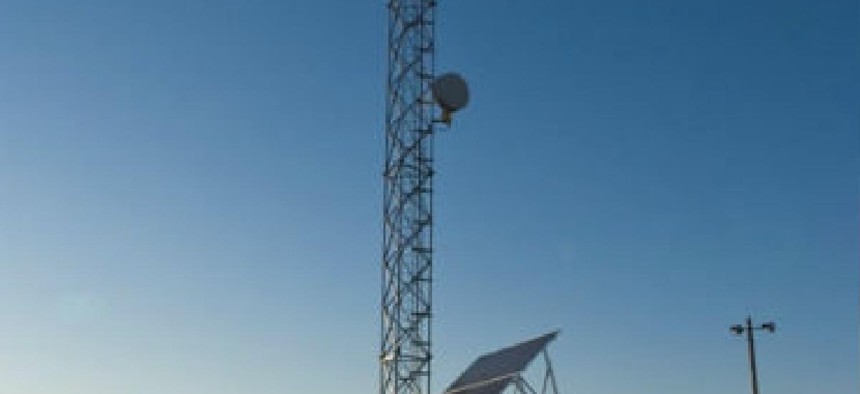Agencies at odds over border tech

CBP official Mark Borkowski complained that the agency's new system was being unfairly linked to the failed SBInet program.

CBP officials say the Integrated Fixed Tower project should not be confused with the failed SBInet (shown above).
The Government Accountability Office doesn't think Customs and Border Protection is adequately planning and testing its surveillance technology on the Arizona/Mexico border. CBP officials respectfully disagree.
In a report released March 12, GAO recommended that CBP create a master schedule for its plan to secure the border and revise the testing schedule for its Integrated Fixed Tower project.
"From our prospective, what isn't clear from the test plans that we've seen from CBP thus far is how they'll be able to ensure that the [towers], once deployed, are meeting the Border Patrol's operational needs," said Rebecca Gambler, GAO's director of homeland security and justice issues, during a hearing held by the House Homeland Security Committee's Border and Maritime Security Subcommittee on March 12.
CBP officials disagree with both recommendations.
"Each program in the [Arizona Technology Plan] has an integrated master schedule (IMS), as required by our policy and practice," said Mark Borkowski, assistant commissioner of the Office of Technology Innovation and Acquisition at CBP, in prepared testimony. "However, the GAO recommends CBP create an IMS for the plan, as if the plan itself is a program or 'system of systems.'"
Borkowski said the Arizona Technology Plan is not a system of systems and tried to distance the plan from the Secure Border Initiative that was canceled three years ago after schedule delays and cost overruns.
"This program, ostensibly, looks something like the old SBInet program," Borkowski said. "As such, it is often treated as if it were SBInet renamed. However, IFT is not SBInet. It is a [non-developmental item] program, and it is a narrowly tailored solution to select parts of the border."
Last month, CBP awarded a $145 million contract to build the towers, which when combined with remote video surveillance systems and mobile surveillance capabilities will account for an estimated 97 percent of the plan's cost.
Lawmakers expressed the kind of skepticism Borkowski was trying to pre-empt.
"Years of delay have not inspired congressional confidence in the [Integrated Fixed Tower] project or the larger Arizona border surveillance technology plan," said subcommittee Chairwoman Candice Miller (R-Mich.).
As CBP struggles to deploy the technology, those crossing the border illegally have shifted the focus of their operations from place to place -- from California to Arizona to Texas -- much more quickly than the agency has been able to respond, she added.
"Our procurement process has to be more agile and quicker," Miller said. "Otherwise, by the time we deploy a solution, the threat may have moved elsewhere."





